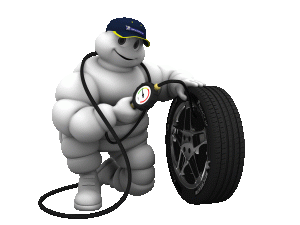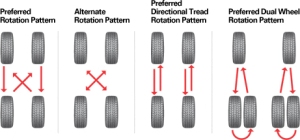With the rising cost of fuel who doesn’t want to save money in any way possible? There are a few ways one can reduce the cost of the gas such as less traveling, car pooling or downsizing to a more economically friendly vehicle. However there are smaller things a person can do to cut down the impact of high gas cost and one of those is being sure all your tires are inflated to the right pressure for your vehicles tires.
The Dangers of Having Underinflated Tires
The fact is according to the U.S. Department of Energy, tires that are underinflated can lower gas mileage by 0.4 percent for every 1 psi (pound per square inch) drop in the pressure of all four tires. The average person is likely to think that their tires are not underinflated so understandably these basic statistics might surprise you. The U.S. Department of Transportation’s National Highway Traffic Safety Administration (NHTSA) conducted a large scale survey which revealed that 27 percent of passenger cars and 32 percent of light trucks (including SUVs and vans) on U.S. roadways have one or more tires underinflated by at least eight psi.
Low gas mileage is incentive enough to keep air levels up properly however there are also a number of safety concerns involving underinflated tires which in the long run are far more important. If tires are substantially underinflated it compromises the integrity, safety and overall life of a tire. Another fact reported from the NHTSA is that driving a vehicle compromised in such a way by under inflation increases the risk of tire failure which includes blowouts and tread separation. These issues could potentially result in loss of control of the vehicle causing an accident that could not only cause serious personal and or property damage but also could result in loss of life.
The Benefits of Correct Air Pressure
If you were to ask most any industry professional they would agree that tire pressure is an essential element in proper car maintenance and care. Not to mention that properly inflated tires enjoy longer road life which in itself is another way drivers can save money. If you can get more mileage out of your tires then it goes without saying that you wouldn’t need to replace them as frequently and that’s more money in your pocket.
Always Get Regular Air Pressure Checks
The average person has such a busy schedule it’s easy to overlook remembering to have frequent pressure checks. Sadly more often than not this important detail is forgotten entirely until the consequences of such an oversight show themselves. Again the average person doesn’t realize that tires lose a little bit of air daily; this fact usually in cooler weather is a typical loss of one or two pounds of pressure per month. When the temperatures increases however so does the loss of daily air pressure. Therefore all drivers need to be aware of this vital fact regardless if they can see the changes in their tires or not.
Every vehicle needs gas to run and every vehicle needs proper tire pressure too. If one remembers to check their tire pressure every time they stopped for fuel then it’s a safe bet that one would be doing so consistently enough. Things naturally become easier to remember with routine so we encourage everyone behind the wheel to make a point of developing this new safety habit by incorporating it into your fueling up routine.
Let Us Help You Get Started
Not everyone is a tire professional like us here at Discount Tire And Automotive so it’s not unnatural for someone to be unaware about how to check tire pressure or perhaps the knowledge is there but one simply just doesn’t feel comfortable enough doing it themselves. If either of these apply to you please feel free to stop at our Logan or Providence location and we would be happy to handle it for you. If by chance you are a bit low then you are already in the right place to be filled up to a proper amount of air. All you need to do is pull up to one of our open bays where you will be greeted warmly by a Tire Professional who will gladly check your air pressure, inspect your tires, and have you on your way all at no cost to you. Also feel free to ask how you can check these levels on your own and we will be happy to teach you or answer any other questions or concerns you may have. It’s our pleasure and desire to help out in any way we can.

